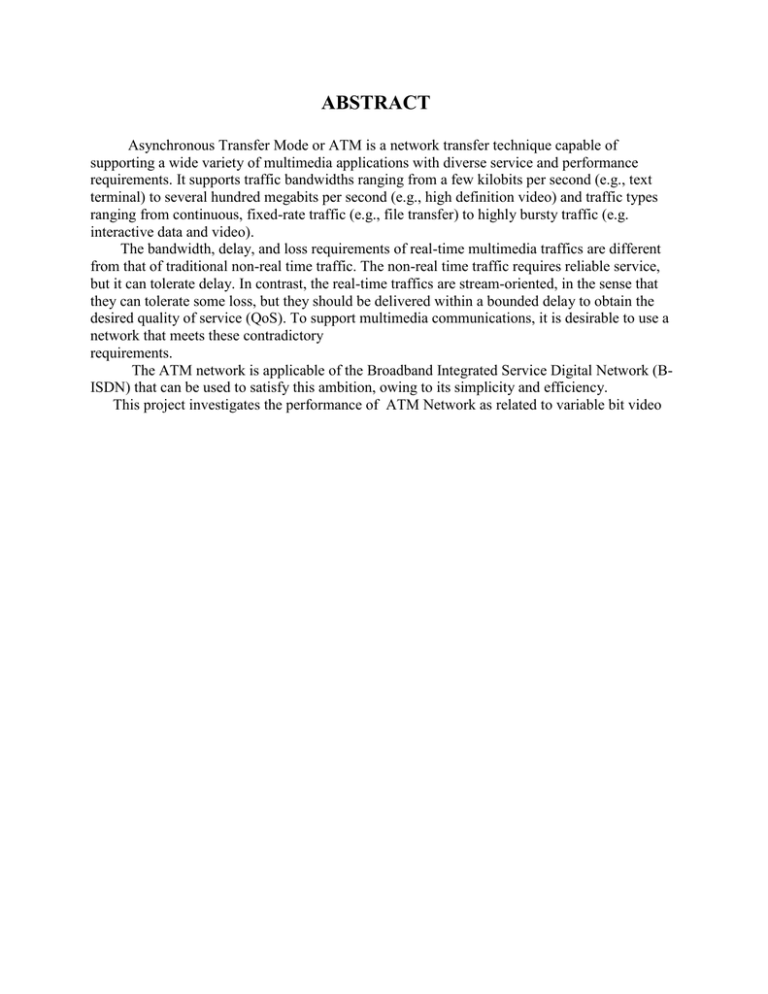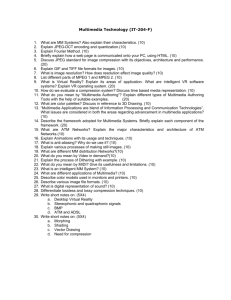ABSTRACT
advertisement

ABSTRACT Asynchronous Transfer Mode or ATM is a network transfer technique capable of supporting a wide variety of multimedia applications with diverse service and performance requirements. It supports traffic bandwidths ranging from a few kilobits per second (e.g., text terminal) to several hundred megabits per second (e.g., high definition video) and traffic types ranging from continuous, fixed-rate traffic (e.g., file transfer) to highly bursty traffic (e.g. interactive data and video). The bandwidth, delay, and loss requirements of real-time multimedia traffics are different from that of traditional non-real time traffic. The non-real time traffic requires reliable service, but it can tolerate delay. In contrast, the real-time traffics are stream-oriented, in the sense that they can tolerate some loss, but they should be delivered within a bounded delay to obtain the desired quality of service (QoS). To support multimedia communications, it is desirable to use a network that meets these contradictory requirements. The ATM network is applicable of the Broadband Integrated Service Digital Network (BISDN) that can be used to satisfy this ambition, owing to its simplicity and efficiency. This project investigates the performance of ATM Network as related to variable bit video



